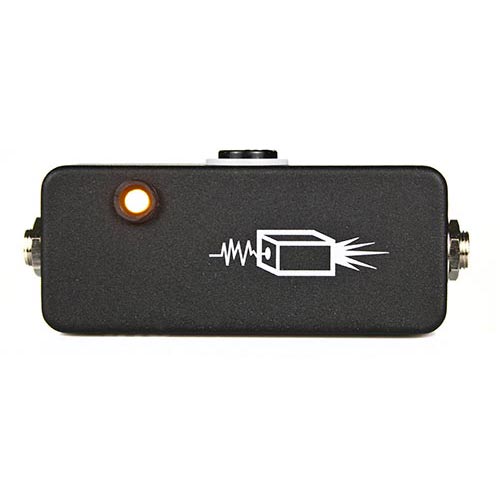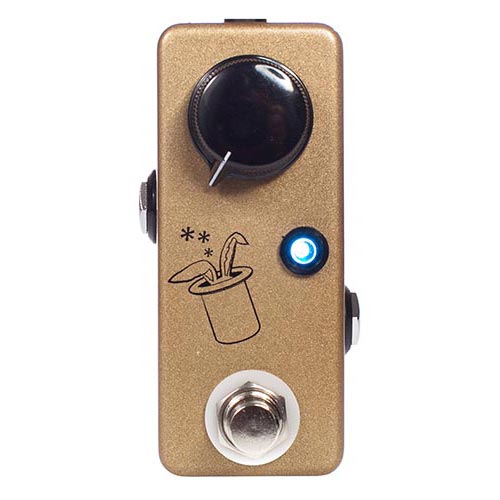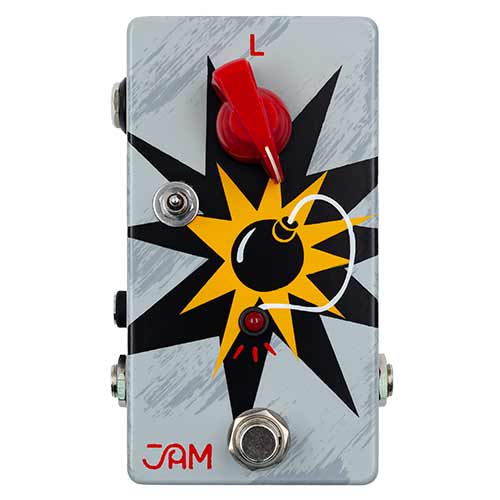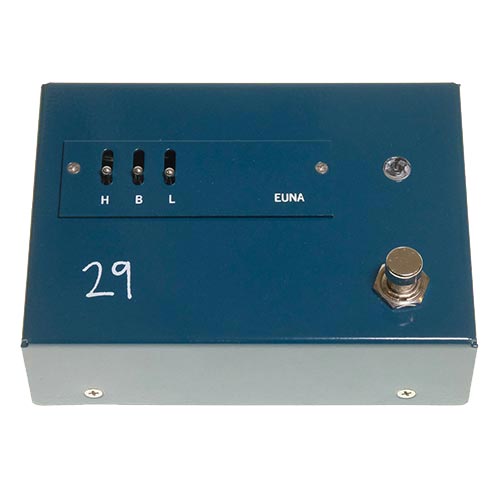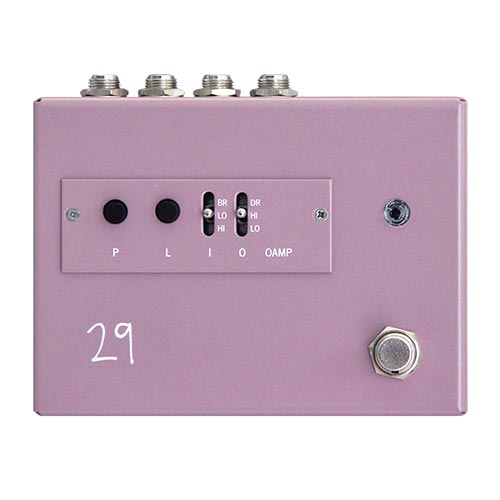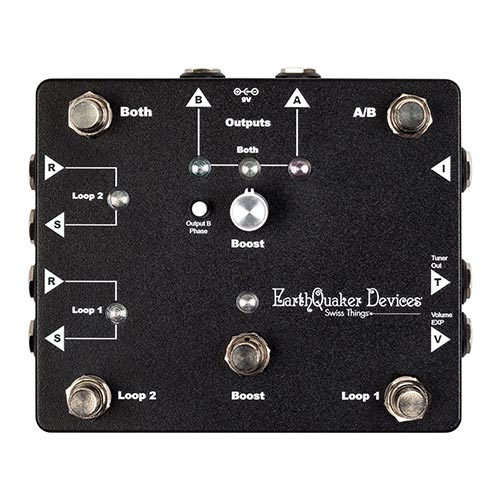
Many guitarists spend hours, days, or even years searching for the right guitar and amplifier combination. It would be a shame to lose that precious signal after all that effort!
Buffer with Electric Guitars
One of the ways to preserve your signal is to buy a good quality guitar cable. But they can also negatively affect your signal, especially when you use a relatively long cable. Using one or more buffers can then help to refresh your signal.
What is a Buffer?
Buffers are electronic circuits used to amplify the signal level and address impedance issues. These problems can arise when using long cables and/or multiple effects pedals. A buffer ensures that your valuable signal remains as intact as possible. It acts as a kind of amplifier for your guitar signal, preserving high frequencies and signal strength even when passing through long cables and effects pedals. Impedance can be seen as a frequency-dependent resistance that hinders electric current.
Impedance can be seen as a frequency-dependent resistance that hinders electric current.
What Does a Buffer Do?
When a guitar signal travels through a long cable or true bypass effects pedals, signal loss can occur. This results in a loss of high frequencies and an overall weakening of the tone. Moreover, long cables and pedalboards can pick up electrical interference, such as electromagnetic interference (EMI) and radio-frequency interference (RFI), further degrading the signal quality.
How Do You Know If You Need a Buffer?
Firstly, you might already have a buffer in your circuit without even knowing it. Some effects pedals come with built-in buffers (for example, all Boss pedals have a buffer). Check the manual of your effects pedal to confirm. To determine if you need a buffer, you can follow these steps:
- Connect your guitar to the amplifier using a high-quality, as short as possible, guitar cable.
- Play for about ten minutes and pay close attention to your tone.
- Focus on the high frequencies, volume, and attack of your sound.
- If possible, record these ten minutes and listen to it again.
- Then, connect your guitar as you normally would, including all your pedals and regular cables.
- Play for another ten minutes without turning on any pedals and listen closely to your tone.
- Record these ten minutes as well and listen to it again.
- Compare the two recorded tracks (A/B the tracks).
- If the second recorded guitar sound sounds duller, has less volume, or sounds less exciting, a buffer may help restore it.
Where Is a Buffer Placed with Electric Guitars?
Buffers can be placed at various points in your signal chain, depending on the effects pedals you use. In general, it is recommended to place a buffer at the beginning of your signal chain, right after the guitar. This buffer ensures that the weak guitar signal is amplified and has the proper impedance to minimize the loss of high frequencies as the signal passes through cables and effects pedals.
Pro tip: Most fuzz pedals do not work well if you place a buffer in front of them. Place a buffer after your fuzz pedal.
Another common placement of buffers is at the end of the signal chain, just before the signal goes to the amplifier. This is done to ensure that the guitar signal is stronger and less susceptible to interference when reaching the amplifier. Additionally, buffers can be placed between effects pedals to minimize signal loss between pedals and maintain the integrity of the guitar signal.
What else should you pay attention to?
Buffer pedals come in various types and sizes. Some important aspects in which buffer pedals differ are: Input and Output Impedance: Buffer pedals have different input and output impedances. The input impedance determines how well the pedal can receive the guitar signal, while the output impedance influences the level of impedance matching when the signal goes to the next pedal or amplifier.
Input and Output Impedance: Buffer pedals have different input and output impedances. The input impedance determines how well the pedal can receive the guitar signal, while the output impedance influences the level of impedance matching when the signal goes to the next pedal or amplifier.
Signal Boost: While the primary function of a buffer is to adjust impedance and prevent signal loss, some buffer pedals can also boost the signal’s volume.
Tone Coloring: While buffers are primarily meant to preserve signal integrity without changing the tone, some buffer pedals may add subtle tone coloring. This could be due to the electronic components used in the pedal or any additional circuits, such as a preamp or EQ.
Build Quality: Buffer pedals can vary in terms of build quality, durability, and components used. This affects the overall reliability and lifespan of the pedal. It is advisable to choose pedals from reputable manufacturers known for their quality and reliability.
What Are the key Differences in Buffer Circuits?
Different circuits are used for buffer pedals, depending on the specific design. Some of the most common circuits used are:
Op-Amp Buffer: Op-amp buffers generally have a transparent sound. They often have a linear frequency response and provide neutral and accurate amplification of the guitar signal. Op-amp buffers are appreciated for their high signal integrity and minimal sound coloring. They typically preserve the tonal characteristics of your guitar and the rest of your signal chain.
FET Buffer: FET buffers tend to offer a warmer and more organic sound compared to op-amp buffers. They can add subtle harmonic saturation and often have a smoother response. FET buffers may exhibit slight compression and a slightly softer character, which can contribute to a more pleasant sound and playing feel. They can be particularly useful in preserving the dynamics of the guitar signal.
JFET Buffer: JFET buffers are also characterized by a warm and organic sound, similar to FET buffers. They often offer a natural response and have a low noise level. JFET buffers may have a slightly rounder and smoother sound than op-amp buffers, and they can add subtle harmonic textures. They generally preserve the clarity and articulation of the guitar signal while providing a pleasing sound.
Simple Buffers (100 to 120 euros)
If you are looking for a simple buffer without too many bells and whistles, consider the following pedals. They are all straightforward pedals with few to no knobs and are very easy to use.
Buffers Combined with Boost (120 to 210 euros)
Some boost pedals have a built-in buffer and can not only improve your signal but also boost it. The pedals below have both functions, making for a nice combination.
Advanced Buffers (210+ euros)
If you need more than just a boost and buffer, look into this category. The pedals from 29 pedals are the most comprehensive buffers we sell. They are of exceptionally high quality and offer extensive possibilities for adjusting your signal. Additionally, Earthquaker Devices has a unique pedal that serves as a kind of Swiss army knife, and Friedman has a buffer bay where you can connect multiple pedals.
In Conclusion
The combination of buffers and electric guitars is a valuable one. Buffers are valuable tools for preserving signal integrity and preventing tone and clarity loss. They reduce impedance problems and minimize signal loss, keeping the guitar sound clear and dynamic. Whether you use a simple buffer or an advanced one, adding a buffer to your electric guitars will likely help you achieve the best sound quality from your electric guitar.

